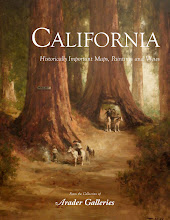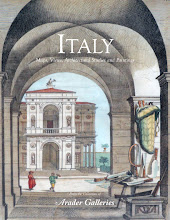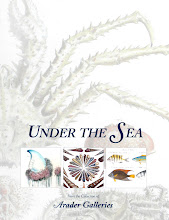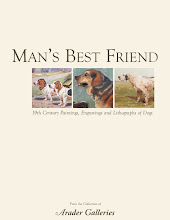Embouchure de Fox-River
23 ¼ x 17 ½
23 ¼ x 17 ½
Karl Bodmer's is known for his magnificent series of ethnographic
accounts of Plains Indian culture during the time of 19th century
western expansion. Bodmer was an unassuming Swiss painter when he was
chosen by Prince Maximilian of Prussia
to accompany his voyage to America,
in order to document in pictorial terms his expedition. With the rest of
Maximilian’s company, the two traveled among the Plains Indians from 1832 to
1834, a time when the Plains and the Rockies
were still virtually unknown. The Bodmer/Maximilian collaboration produced a record
of their expedition that is incontestably the finest early graphic study of the
Plains tribes. Together the documented writing of Maximilian’s travels coupled
with the iconic scenes of the West produced the seminal publication Travels in the Interior of North America, 1832-1843.
Though Bodmer is most noted for his ethnographic
drawing and paintings of the Plains Indians but his scenes of the North American views captured the mystique and majesty of the vast and diverse American landscape. Maximilian and Bodmer journeyed from St. Louis up the Missouri River on the American Fur Company steamboat “Yellowstone,” stopping at a series of forts built by the Fur Company and meeting their first Indians at Bellevue. The travelers continued to Fort Union, Fort Clark, and Fort Mackenzie, which proved to be the western most point of their journey. After living among and studying the Blackfeet tribe for several weeks, Maximilian decided that it was too dangerous to continue, so the travelers returned southward, reaching St. Louis in May 1834.
Forest Scene of the Lehigh
23 ½" x 17 ½"
Cleveland Lighthouse
17 ½" x 12"
17 ½" x 12"
Once the journey was over, Bodmer spent four years in Paris supervising the production of the aquatints made from his drawings.These spectacular and atmospheric images are important and beautiful records of the landscape of the American West as it appeared when Bodmer saw it, just before westward expansion and industrialization took hold and began the indelible transformation of the frontier.
Junction of the Yellowstone River with the Missouri
24" x18"
24" x18"
A Selection of Bodmer's North American Views and Ethnographic works are available for purchase at Arader Galleries 432 Jackson St. San Francisco, CA 94111
Please call 415-788-5115 with any questions
Please call 415-788-5115 with any questions












